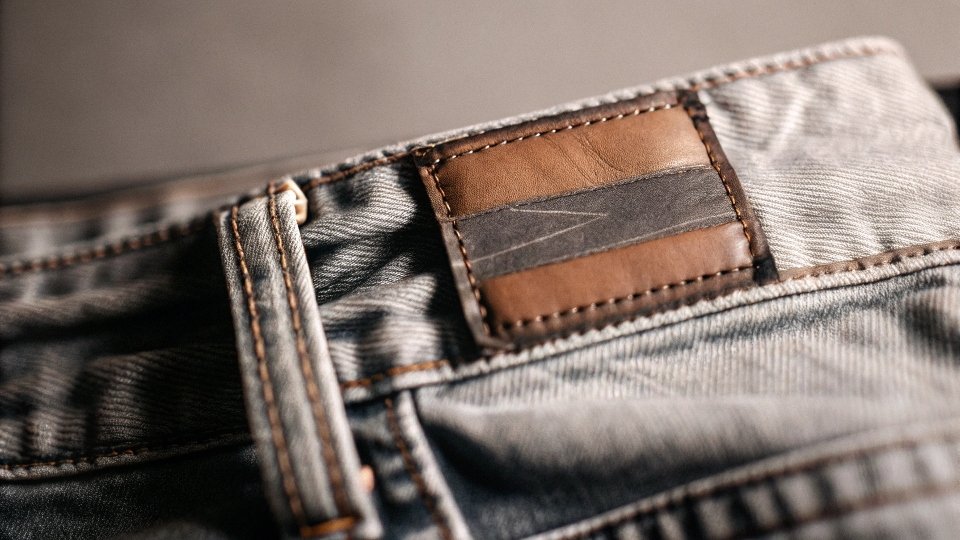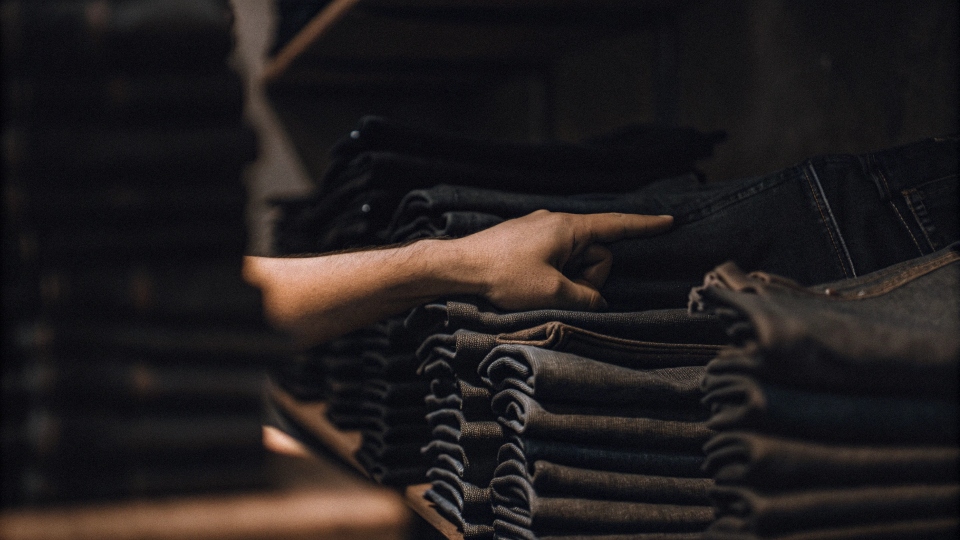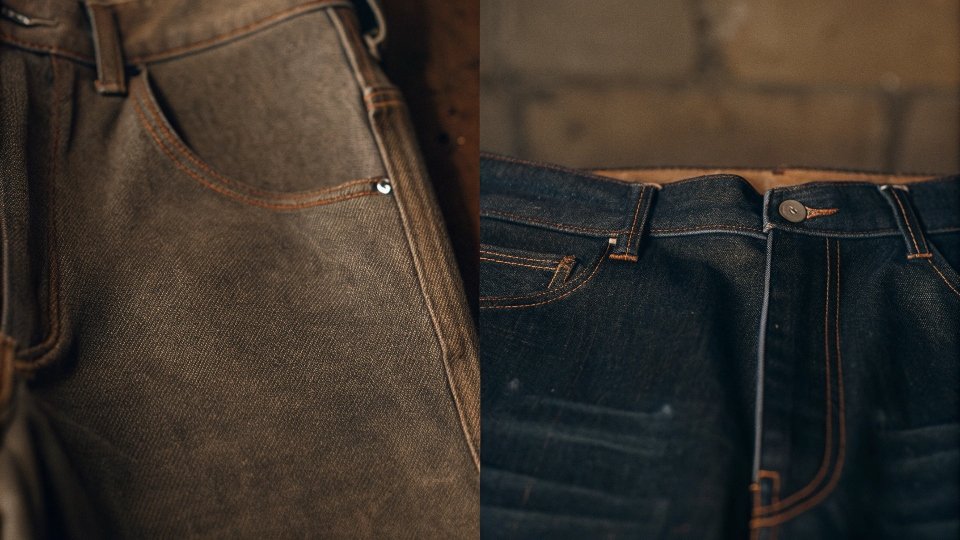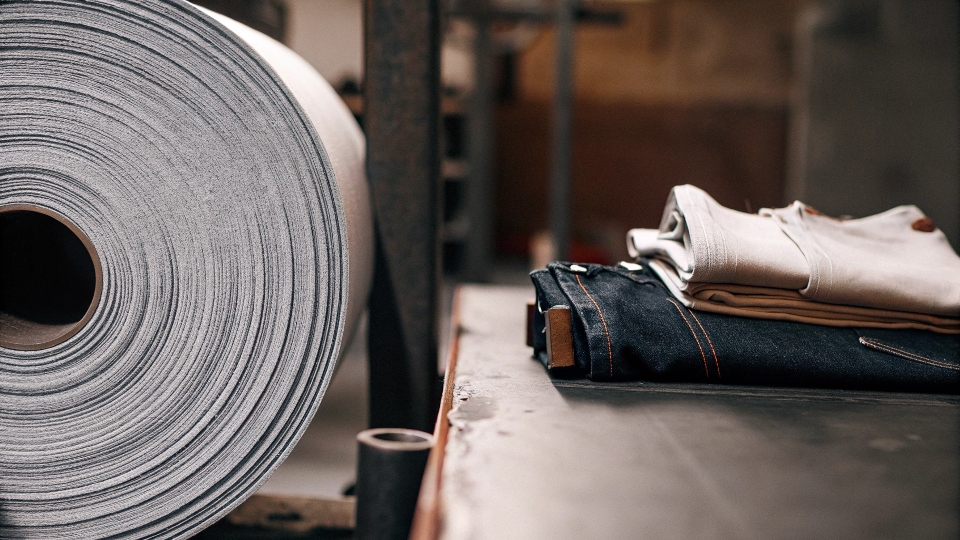You see the word "denim" on almost every jeans1 label, ad, and website. It feels a bit obvious, like a car brand advertising they use "metal." Why state it?
Brands use "denim" because it’s a promise of authenticity, heritage2, and quality. It immediately tells customers they are buying genuine, durable jeans made from the traditional fabric, not just a pair of blue pants.
From my factory floor, I see the word "denim" not just as a label, but as the very foundation of what we do. It’s the one word that separates the real deal from the thousands of imitations out there.
A brand emphasizes "denim" to anchor their product in a rich history of durability and timeless style. It’s a small word that carries a lot of weight, communicating trust and quality before you even try the pants on. Let's break down why this one word is still so powerful.
Why do people call jeans denim?
It gets confusing when you hear people use "jeans" and "denim" to mean the same thing. You want to be sure you're using the terms correctly, or if there's a nuance you're missing.
People call jeans "denim" because the fabric is the single most defining feature of the garment. You can't have jeans without denim, so the material's name has become a popular shorthand for the final product.
It really is that simple. All jeans are made from denim, but not all denim is made into jeans.
In our factory, we use denim to make jackets, skirts, shorts, and even bags. The word "jeans" specifically refers to the style of pants, which became famous as the workwear created by Levi Strauss. The word "denim" refers to the tough, indigo-dyed3 cotton twill fabric4 itself. Over the last century, jeans became the most famous product made from denim by a huge margin.
As a result, people started using the words interchangeably in casual conversation. It’s a linguistic shortcut. When a friend says, "I need to buy some new denims," everyone in the room knows they mean they're going shopping for jeans, not just the raw fabric.
What does denim mean in jeans?
You see phrases like "premium denim" or "authentic denim" on tags. You wonder if this is just marketing fluff or if the word "denim" actually signifies a specific quality standard.
In the context of jeans, the word "denim" means the garment is made from the traditional, sturdy, indigo-dyed cotton twill fabric. It signals authenticity and durability, separating real jeans from cheaper pants made to look like them.
In our factory, "denim" is a technical term. It means a very specific woven structure—usually a 3x1 twill weave of cotton yarn. This weave is what makes the fabric so incredibly strong and gives it that classic diagonal line you can see up close.
When a brand like the ones I work with puts "denim" on their label, they are making a concrete quality claim. They are telling you this isn't some thin, printed cotton or a cheap polyester blend that just looks blue.
They are promising that the pants will have the strength, the feel, and the potential to fade beautifully over time that only true denim provides. It's a stamp of authenticity in a crowded market.
| Feature | True Denim | "Jean-Like" Fabric (Imitations) |
|---|---|---|
| Material | Almost always 100% cotton or high-cotton blend. | Often thin cotton-poly blends or knit fabrics. |
| Weave | Strong twill weave (visible diagonal lines). | Plain weave or knit, lacking structure. |
| Durability | High. Designed to last for years. | Low. Prone to stretching out and tearing. |
| Aging | Fades and softens with wear, creating character. | Fades unevenly or not at all; can look worn out. |
What do the French call jeans?
The word "denim" comes from France, which might make you curious. What is the modern French word for the pants that have become a global uniform?
The French simply call jeans "un jean" (pronounced like 'jeen'). While the fabric's name, denim, comes from the French phrase "de Nîmes," the name for the pants themselves was adopted directly from American English.
The history is one of my favorite things to discuss with designers like Dean, because it shows how global this garment is. The fabric's story starts in the city of Nîmes, France.
They produced a very tough twill fabric called serge de Nîmes5. English speakers eventually shortened this to just "denim." But the pants themselves, the "jeans," get their name from Genoa, Italy. Sailors from Genoa were called "Genes" in French, and they wore pants made from a similar, though less refined, cotton fabric.
When Levi Strauss began making his famous riveted pants in America for miners, he used the superior French de Nîmes fabric but called the pants "jeans." The French, in turn, loved the American garment so much that they adopted the American name for the pants. So today in Paris, they ask for "un jean."
Is there a difference between jeans and denim?
You've heard the words used together and separately so often. You just want a final, crystal-clear answer: what is the real difference between the two?
Yes, there is a clear difference. Denim is the raw material—the strong cotton twill fabric. Jeans are the finished product—the specific style of pants made from that denim fabric.
Think of it like this: wood is the material, and a table is the product. Denim is the fabric, and jeans are the pants. In my factory, we order huge rolls of denim from textile mills6. That's our raw material.
My team of skilled workers then cuts, sews, washes, and finishes that denim to create a pair of jeans. So, you can touch a roll of denim, but you wear a pair of jeans. While people use the words interchangeably in casual talk, in the manufacturing world, the distinction is absolutely critical.
A designer’s tech pack will specify the denim (e.g., '12-ounce, 2% stretch indigo denim') and provide a pattern for the jeans (e.g., 'slim fit, 5-pocket jeans'). One is the ingredient; the other is the final dish.
Conclusion
The word "denim" isn't repetitive marketing. It's a brand's promise of authenticity, a connection to a rich history, and a guarantee of the unique character only real jeans have.
-
Clarify the distinction between jeans and denim to enhance your knowledge of clothing terminology. ↩
-
Discover how heritage shapes denim brands and their connection to tradition and craftsmanship. ↩
-
Understand the significance of indigo-dyed denim and its impact on the look and feel of jeans. ↩
-
Explore the characteristics of twill fabric and its role in creating durable denim. ↩
-
Explore the historical significance of serge de Nîmes in the development of denim fabric. ↩
-
Gain insight into the production process of denim at textile mills and the craftsmanship involved. ↩










